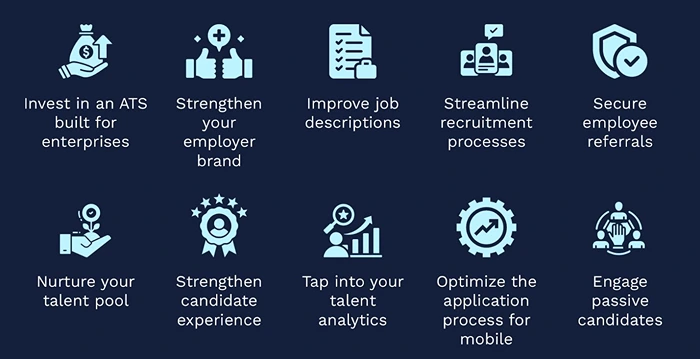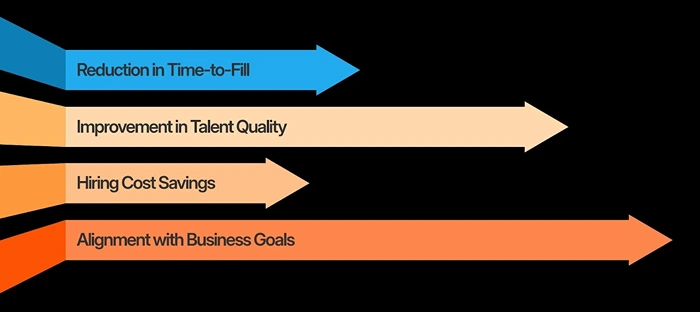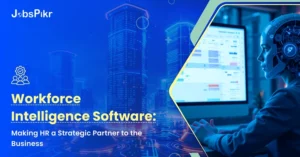What Problems Call for Talent Sourcing to Strategically Evolve? The challenge of hiring talent is one that has proven difficult in the past. However, the year 2025 poses a new set of challenges because the need for talent is at an all-time high. Many companies are currently facing a constant lack of skilled professionals, inflation in wages, and a rapidly changing environment that necessitates new skills within talent pools. The traditional approach of recruiting talent, advertising for a position and passively waiting for applications, is insufficient. Talent sourcing needs to become more nimble, data-driven, and attune to market trends.
Recruiters and sourcing specialists used to be tasked with simply filling roles within an organization. Now, they are expected to deliver talent in a timely and cost-effective manner. Better yet, suppliers of talent must ensure that applicants fit with the brand’s long-term strategies. This is especially tough considering hiring budgets are already strained and the competition for high-value candidates is fierce. To make matters worse, SHRM’s 2024 survey indicated that 67% of talent acquisition leaders said ‘time-to-fill’ as a major portion of the hiring process in today’s world. Filling roles and positions is taking far too long in comparison to the pre-2020 world, where everything was easier for businesses, and this hampers the recruiting process significantly.
This transition requires implementing a new talent sourcing strategy that is very different from the traditional model, which is predicated on fulfilling open positions and focuses on talent availability. Where is the talent pool? What is the competition paying? What are the effective, yet underused sourcing channels? These questions have answers in market intelligence and workforce analytics.
In this piece, we will address how enterprise sourcing strategies adapt stemming from the realities on the ground. From underutilized geography identification through salary benchmarks to demand trends, we will demonstrate organizational approaches while describing Tools like JobsPikr that keep them ahead.

10 Effective Strategies For Talent Acquisition
The Shift in Talent Sourcing Strategy: From Volume to Value
For many years, enterprise recruiting emphasized capture scale: How many resumes could be amassed? How many interviews are scheduled? How fast could a position be closed? That business model is starting to crack with critical industry talent pipelines drying up and hiring costs escalating. Today, successful businesses are changing their talent sourcing strategy to focus on value instead of volume.”
This new approach centers around precision instead of just reach. It focuses on acquiring talent with the foresight of long-term business goals rather than short-term needs. Instead of reaching out to applicants through generic job boards and bulk outreach efforts, recruiters are now employing targeted approaches which prioritize quality of candidates over quantity.
The emphasis on value and fit has also intensified for the long term. Simply matching someone with the description is no longer adequate. Hiring managers are specifically looking for those who can adapt, align with the company’s values, and grow alongside the business. Therefore, strategies must go beyond just skills and incorporate potential, mobility, and cultural alignment.
But most importantly, sourcing teams are no longer operating in isolation. They are working closely with HR leaders, workforce planners, and heads of business units to ensure that sourcing initiatives help achieve broader business objectives, whether it’s market expansion, future skills development, or enhancing diversity within leadership pipelines.
As a consequence, talent sourcing is becoming more strategic, agile, and informed with data—a shift that addresses the realities of today’s labor market and evolving expectations of hiring teams.
Using Market Data Insights to Create Advanced Business Talent Sourcing Strategies
In the current business environment, intuition does not sufficiently achieve effective sourcing pipelines. To win competition over talent and do it more economically, market data is the basis of the talent sourcing strategy. Insights can reveal where skilled talent is available, how to approach them, and what compensation will attract them.
Overlooked Areas and Emerging Regions for Talent Acquisition
Almost all enterprises default to sourcing talent from main metropolitan areas like New York, London, and Bangalore; however, competition in these locations is cutthroat, and remuneration is increasing substantially. Market data uncovers lesser-known emerging hubs in smaller or non-traditional cities with a growing candidate pool and less saturation.
For instance, Cluj-Napoca in Romania, Cebu in the Philippines, or Guadalajara in Mexico now boast thriving tech talent. Companies who recognize these emerging hotspots early can devise sophisticated sourcing strategies with minimized competition.
Using Job Demand Data to Prioritize Sourcing
Labor market intelligence platforms that aggregate job postings across diverse industries and geographies, such as JobsPikr, offer real-time analytics. This enables recruiters to assess hot and cold opportunities, which is crucial for forward planning.
Sifting through the locations with less aggressive competition and higher response rates enables a company to reallocate sourcing efforts and compete in the finance industry if their AI engineers are in demand but are on retail’s decline.
Benchmarking Salaries to Stay Competitive
Information inflation about pays coupled with new laws makes determining which offer is competitive extremely difficult. Employers can avoid losing potential candidates and overpaying for a position with the help of live salary benchmarking tools that track compensation based on region and position.
Having well researched insights increases trust among candidates given the heightened scrutiny around pay transparency and equity.
Sourcing teams gain clarity on how to work efficiently queues through aligning strategy based on data as capitulate their efforts where to invest, position the roles, and streamline processes devoid of sacrificing quality or cost.
Alternative Sourcing Channels: What’s Working in 2025
The continuing shortage of workforce coupled with rising hiring costs has made enterprises reconsider not only whom they are recruiting but also their points of contact. While conventional job ads and LinkedIn messages serve a purpose, companies are increasingly turning to alternative sourcing channels that provide better and faster results.
Talent Marketplaces and Freelance Platforms
The growth of remote work has opened the door to global talent marketplaces. Platforms like Toptal, Upwork, and specialized skill-based networks now give recruiters access to vetted professionals across industries.
These channels are especially valuable for project-based roles or hard-to-fill skill gaps where speed and flexibility are key. Many enterprises are even building hybrid models—using freelance talent while planning for full-time hires later.
Alumni Networks and Boomerang Hires
Re-engaging former employees has become a smart sourcing tactic. Alumni already understand the company culture and often return with new skills or broader experience.
Some organizations are investing in formal alumni engagement programs, using them as a long-term sourcing pipeline. It’s not just about familiarity—it’s about lowering onboarding time and improving retention through existing alignment.
Internal Talent Mobility
Sometimes the best candidates are already on the payroll. Companies with mature talent management strategies are using internal mobility platforms to identify high-potential employees and proactively match them to open roles.
This internal sourcing approach not only reduces external hiring pressure but also boosts employee engagement and career development.
Skills-Based Partnerships and Reskilling Programs
Enterprises are also forming partnerships with bootcamps, community colleges, and NGOs to build niche talent pipelines. By co-creating upskilling programs, companies are addressing future skill needs while broadening access to underrepresented talent groups.
The most effective talent sourcing strategies in 2025 are no longer limited to external job posts. They are multi-channel, long-term, and tailored to the realities of both the business and the labor market.

Aligning Talent Sourcing with Talent Management Strategy
In today’s complex hiring landscape, sourcing talent is no longer just about filling seats—it’s about building the workforce your business needs to grow, innovate, and compete. That’s why talent sourcing can’t live in isolation. It has to be aligned with broader business priorities and integrated with your talent management strategy.
Enterprises that treat sourcing as a strategic function—one grounded in data, market realities, and future planning—are not just filling roles. They’re reducing time-to-hire, improving talent quality, and gaining a long-term competitive edge.
From identifying overlooked regions to benchmarking compensation, from tapping into new sourcing channels to forecasting job demand—market intelligence is the foundation of this modern approach. Tools like JobsPikr help sourcing teams take this step confidently by delivering real-time labor market insights that fuel smarter decisions at every stage of the hiring journey.Looking to future-proof your talent sourcing strategy?
Explore JobsPikr and discover how data-driven sourcing can help you hire faster, smarter, and in sync with your business goals.



